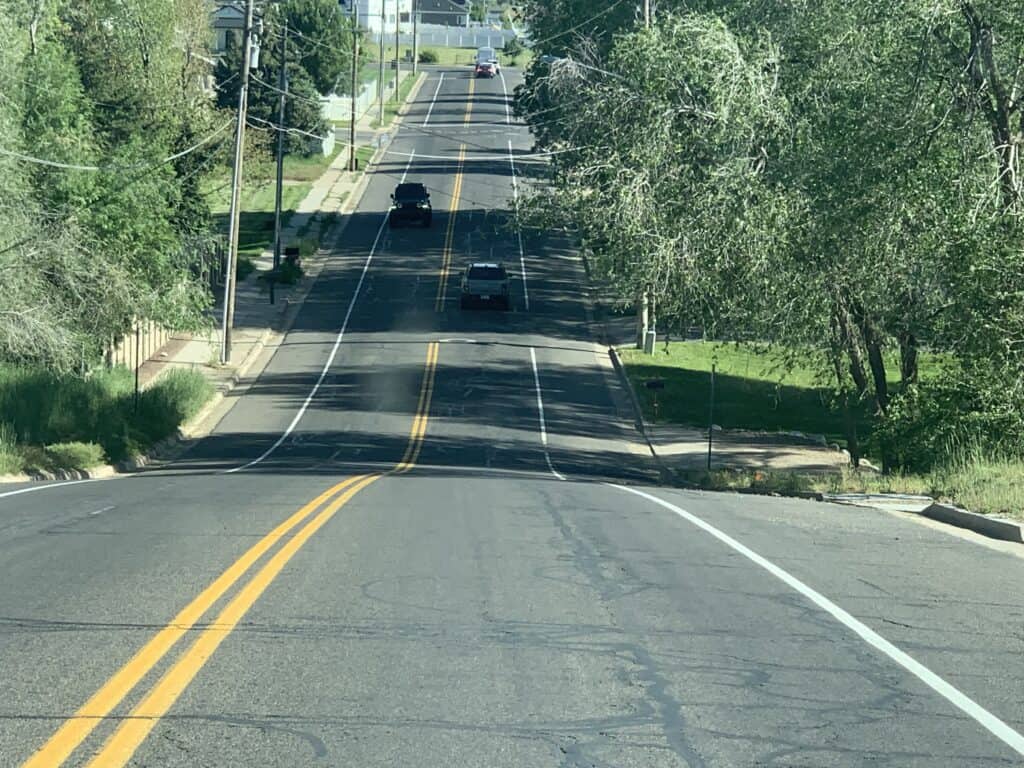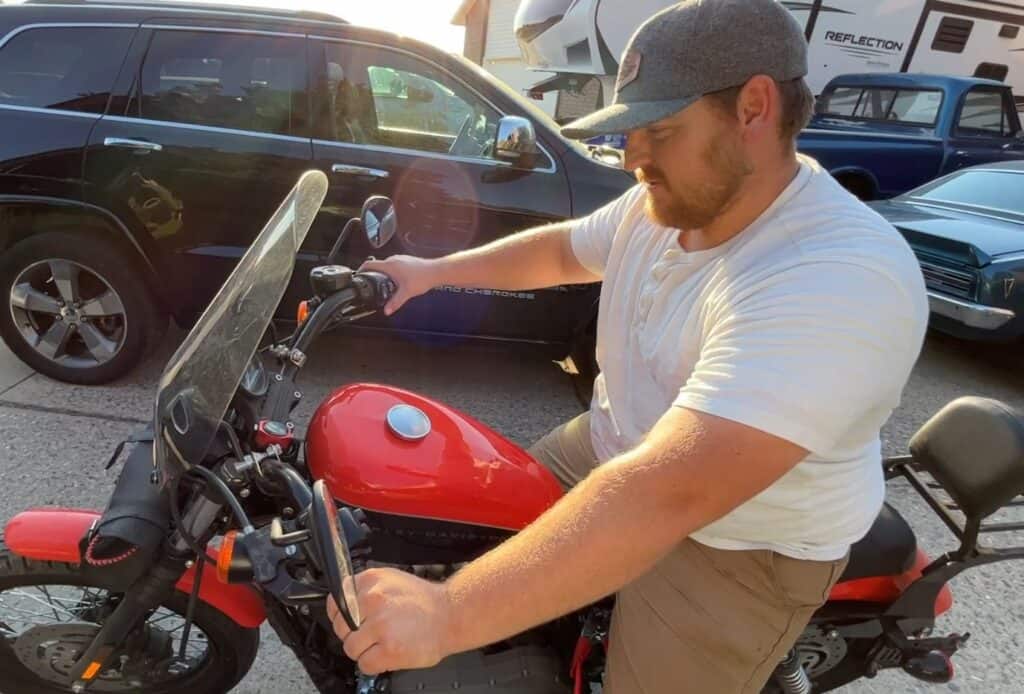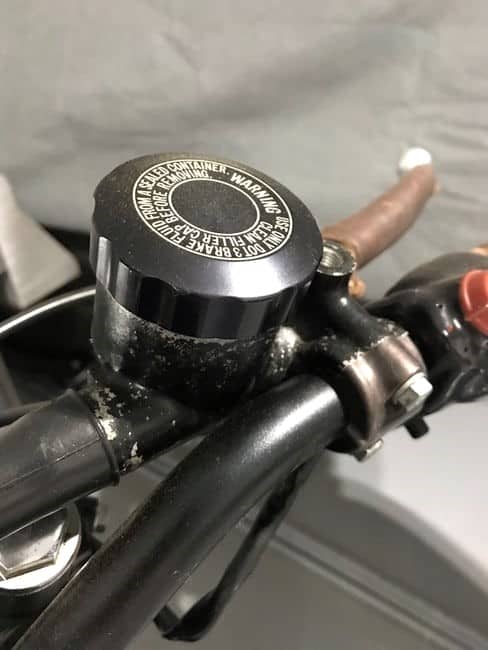
Part of being a responsible motorcycle rider is knowing the correct way to handle any type of road condition that you might come across. Learning how to ride in various different road conditions helps us as riders to find our limits and stay safe.
Each type of road condition requires a different technique to stay safe and maintain traction while simultaneously not putting too much strain on our motorcycles. One specific technique that’s important to maneuver is riding down steep hills.
How do I ride a motorcycle down a steep hill? When riding down a steep hill on a motorcycle, it’s important to use the right gear rather than constantly using the brakes. By downshifting, RPM’s should be slightly higher than normal while maintaining proper speed and control without over heating the brakes.
Just like all things related to motorcycle riding, maintaining balance in all things means a long life of riding ahead of us. Today we will look at how to ride down a steep hill, common mistakes to avoid, and emergency maneuvers. Remember that keeping composure and knowing your limits are the two biggest things that we can do to make sure that we stay safe out on the road.
How to Ride Down a Steep Hill
We’ve all driven cars down a steep hill or down a windy mountain road. Depending on the situation, we probably smelled the sweet fumes that fills the air as our brakes are filled with the heat generated by the friction with the rotors. As you might have imagined, riding downhill has less to do with brakes, and more to do with transmission gear selection. Luckily most motorcycles have a manual shifting transmission, which makes riding downhill possible without using the brakes.

Before we ride down a steep hill, there are several things that we should make sure we know and check. First, we should be regularly checking the condition of our brakes on our motorcycle. The worst time to find that we need to replace our brakes is when it’s too late.
To check our brakes, we can look at the owner’s manual, which should have specifications that indicate the minimum pad thickness that we can have while maintaining full functionality. It should have similar measurements that are meant to check the rotor thickness.
It’s also a good idea to do a visual inspection of the brakes. Do the rotors look grooved? If they don’t look smooth and flat, then it’s probably time to change them. Also take a look at the pads. Are they worn evenly across the whole pad?
If the pad shows excessive wear on just one pad, or on just half of the pad, that might indicate that something in the caliper is seized or maybe that the rotor is warped. Keeping an eye on brake wear should be our first step to making sure that we are prepared to ride safely down a steep hill.

After making sure our brakes are up to the task, we need to be in tune with how our motorcycle sounds. When we ride down a steep hill, we’re going to have to be using our gears to slow us down, so it’s important to know what our bike sounds like at normal RPM ranges. When going downhill, we will be sitting in a gear that will cause the RPMs to rise, but we should be familiar with the sounds of the engine so that we don’t avoid any costly mistakes.
Now that we know the brakes are good and what our engine sounds like, it’s time we start to descend down the hill. While riding downhill it’s important to find the right gear. This means that we don’t want to be in a gear that’s too low, and cause our RPMs to sit too high, and we also don’t want a gear that’s too high and makes us tap on our brakes every second or two.
The gear we choose should be enough to sit the RPMs slightly higher than a normal working condition and keep your speed fairly close to the speed limit.
What To Do When You Find Yourself Going Too Fast
Sometimes a hill ends up being steeper than we thought it was going to be, or we misjudge the gear that we thought we should be in. Like I mentioned earlier, we need to keep composure so that we can think logically through the situation. If we are picking up speed and have been using our gears to slow us down, its time to use the brakes a little bit to get some control.
Use the brakes progressively (not all of a sudden), and shift down to a lower gear. Once you are at a comfortable speed, slowly release the clutch, and use your gearing to slow you down the rest of the way. Using your transmission to slow you down is very important when going down a hill.
If you find yourself in a situation where you had been using your brakes heavily when you should have used the gears, the brakes may wear out, and not slow your motorcycle down sufficiently. If this happens, you need to stop using the brakes and start using the gears to slow the bike down as quickly as possible.
This is not ideal because using the gears to quickly slow our speed may cause some more serious damage to the transmission, but it may be necessary if it’s a matter of your safety.
Can You Use the Brakes Too Much?

All brakes, even brakes that are brand new, can only absorb so much heat.
When you squeeze and step on the brakes, causing the pads to grab the rotors, the pads and the rotors use friction to slow the bike down, and the energy lost in the forward momentum is transferred to heat. To save you a lesson in physics, the heat is then either emitted into the air or absorbed by the pads, and the pads can only absorb so much heat until they stop working.
This phenomenon is called brake fade or heat soak. Using the brakes too much will essentially ruin the effectiveness of the brakes temporarily, and it could also permanently damage them as well. Using the brakes to slow is dangerous and could be costly. If the rotors and the pads begin to soak up too much heat, they could cause warping to occur around the rotors.
A warped rotor cannot be fixed, and would have to be replaced. A symptom of a warped rotor is going to be a vibration that is felt as the brakes are engaged. The vibrations can differ in severity, but any amount of warping across a rotor is something that should be quickly taken care of.
Is Downhill Riding Hard on the Transmission?
Generally speaking, engine braking that is properly executed and limited to downhill conditions will not damage the transmission. The process of down shifting should not cause premature transmission failure, but engine braking shouldn’t be the only way that you slow your bike down. In normal driving conditions it is generally a better idea to slow down using brakes while in neutral than through the gears. When you think about it, changing brakes is easier than changing the clutch.
To make sure that you aren’t putting unnecessary strain on your motorcycle as you use the gears to slow down, there are a couple of techniques to keep in mind for a more advanced rider. The first is to just keep an eye on the RPM and the sound of the engine. It should sound more strained than regular riding, but it shouldn’t be under too much load, so make sure you keep an eye on your coolant temperature.
The second tip is to make sure to ‘blip’ the throttle as you down shift. This means that while the engine is in neutral and you’re slowly releasing the clutch to place it into gear, use the throttle to raise the RPMs to be close to where you would expect them to be.
For example, if I’m in third gear going down a hill at around 35 mph and around 5000 rpm, but I find myself picking up too much speed, I will want to lower myself into second gear. I can guess that my RPMs might sit around 7000 RPM in second gear at 35 mph, so, as I place the bike into neutral and downshift to second, I raise my RPMs to about 7000 so that as I release the clutch the transition will be smooth.
It’s possible to downshift multiples gears on a motorcycle while going downhill. See our other article here to learn more.
All of this can sound very overwhelming, but it really is very straight forward. Always remember to slowdown the best you can using the gears of the motorcycle, and to be careful and to not let your brakes get too hot. Finally, don’t attempt to ride anywhere that may be beyond your experience and comfort level.
Conclusion
If you haven’t encountered the situation of riding your motorcycle down a steep hill, chances are you’ll do it at some point during your riding career. But if you’re reading this article, you’re heading in the right direction!
While riding down hill, it’s best to find the right gear and let the engine do the slowing instead of the brakes. It’s hard to say specifically what gear will work best since the weight of the motorcycle and the grade of the hill all need to be considered. Be sure that your RPMs aren’t too high to ensure the health of your engine and also be mindful of the condition of your brakes.
Are there any other tips you guys have when it comes to downhill riding? Feel free to comment your thoughts!
